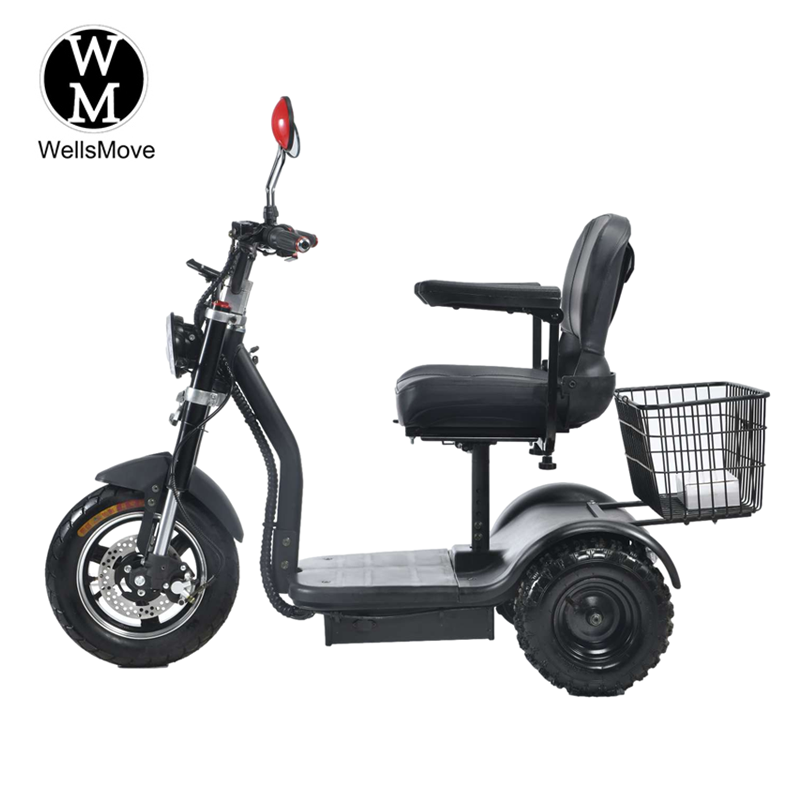With growing awareness of inclusive mobility solutions, electric scooters have become a popular choice for people with varying degrees of mobility challenges. Electric scooters help improve accessibility and inclusion by providing independent transportation for individuals who have difficulty walking or need additional support. However, it’s important to realize that not everyone is eligible to ride a mobility scooter. In this blog post, we’ll take a deep dive into who can use a mobility scooter, the necessary qualifications, and the importance of safety guidelines.
Who is a scooter suitable for?
Mobility scooters are primarily designed for people who have difficulty walking or getting around due to old age, a disability, or a medical condition. They offer a practical and reliable option for those who can’t develop enough physical strength to walk long distances or move comfortably through congested areas. Mobility scooters aren’t limited to seniors; they are also available to people of all ages who need a mobility aid.
Eligibility to ride a scooter
While electric scooters offer ease of use, it is critical to ensure that those operating the scooters are qualified to operate them. Some potential qualifications include:
1. Physical Abilities: Users should possess sufficient upper body strength, coordination, and stability to safely operate the scooter. Due to the different operating mechanisms, the user must have effective control over the steering handle, brakes, acceleration, etc.
2. Cognitive Awareness: The ability to follow directions, make quick decisions, and have a basic understanding of traffic rules is critical to driving a mobility scooter safely. Users must be aware of their surroundings and be able to respond appropriately to unexpected situations.
3. Visual and auditory abilities: Sufficient visual and auditory perception is essential to maintain awareness of other pedestrians, vehicles or obstacles. Being able to hear sirens, horns and approaching people is fundamental to safety.
4. Training and education: Prior knowledge about operating mobility scooters, including learning and following safety guidelines, can mitigate potential risks. Formal training should be undertaken prior to operating the mobility scooter for the first time.
The Importance of Security Guidelines
The safety guidelines associated with electric scooters are designed to ensure the well-being of users and others in their vicinity. Some important security aspects to consider are:
1. Speed limits: Mobility scooters often have speed controls to ensure safe and controlled movement. Users must observe these restrictions, especially in congested areas or where pedestrian traffic occurs.
2. Right of way: Understanding and respecting right of way ensures a smooth transition and minimizes potential accidents. Yielding to pedestrians, approaching corners and intersections slowly, and avoiding sudden movements are critical to maintaining safety.
3. Traveling outdoors: Be extra careful when using your scooter outdoors. Users should always take weather conditions into account, check battery levels, and be alert for uneven terrain or obstacles that may pose a risk.
4. Regular maintenance: Ensuring the reliability of the scooter requires regular maintenance, such as battery checks, tire checks and brake tests. Regular maintenance and repairs by professionals are also essential to ensure optimum functionality.
Mobility scooters provide a vital means of transportation for people with reduced mobility, allowing them to regain their independence. However, given the physical, cognitive and sensory demands involved, only qualified individuals should operate mobility scooters. By following safety guidelines and taking proper training, users can get the most out of their mobility scooters while ensuring their own and the well-being of others. When carefully considered and used responsibly, mobility scooters can truly improve accessibility and inclusion for the individuals who need it most.
Post time: Aug-09-2023



